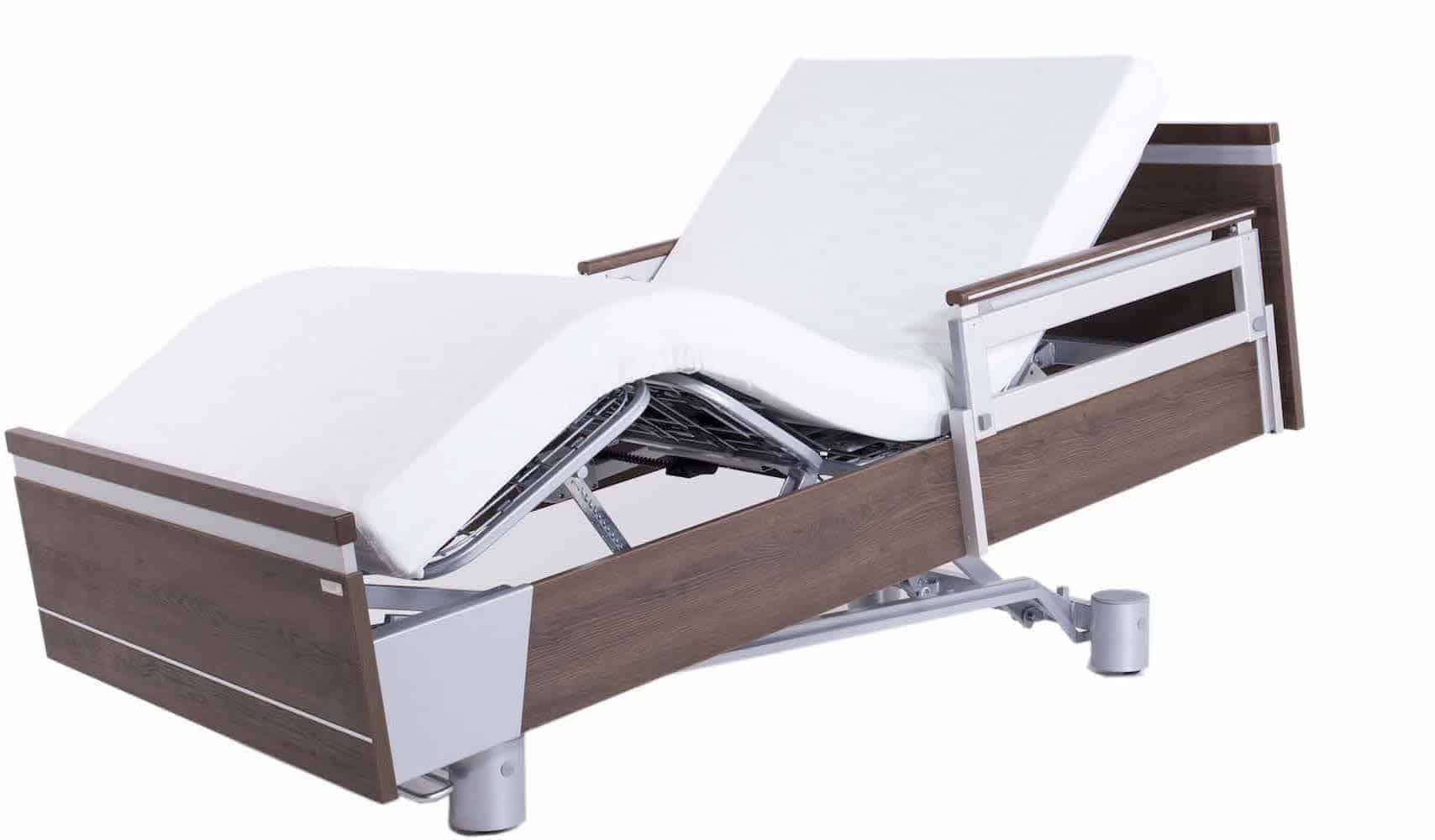Learn About Questions To Ask About Home Hospice Care To Make Informed Decisions
| ✅ | Home hospice care focuses on providing physical, emotional, spiritual, and social support for those nearing the end of their lives. |
| ✅ | It offers pain management services, 24-hour access to medical equipment, and professional guidance in decision making. |
| ✅ | Choosing the right bedroom furniture, such as hospital beds, is important for comfort and safety in a home hospice setting. |
| ✅ | Factors to consider when deciding on hospice care include comfort level, medical staff, end-of-life planning, and emotional support. |
What Is Hospice Care?
Hospice care is a comforting journey that provides you and your loved ones with love, support, and understanding during this difficult time. It’s a special kind of care offered to people who are nearing the end of their lives due to an illness or condition that cannot be cured. Hospice care focuses on comfort measures rather than curative treatments, although it does include medical interventions when necessary. The goal is to provide physical, emotional, spiritual, and social support for both the patient and their family.
What To Expect:
- Pain management services
- Medical equipment available 24 hours a day
- Professional guidance in decision making regarding care
- Supportive counseling for patient and family members
Pros:
- Quality of life improved through symptom management
- Supportive environment for patients and families
- Emotional support provided by interdisciplinary team
Cons:
- Limited access to certain treatments or procedures
- Loss of autonomy in decision making regarding care
- Difficulty adjusting to lifestyle changes associated with hospice
Patients with ALS have lengthy and costly hospital admissions. Hospitalization in amyotrophic lateral sclerosis. N. Lechtzin, C. Wiener, L. Clawson, V. Chaudhry, G. Diette. https://doi.org/10.1212/WNL.56.6.753. Neurology
What Is Home Hospice Care?
Home hospice care provides end-of-life support in the comfort and familiarity of a patient’s own home, offering numerous benefits. Being in a familiar environment promotes a sense of comfort and security, reducing anxiety and stress. Patients can maintain a higher quality of life by participating in activities they enjoy and spending time with loved ones. Personalized care plans ensure individual preferences are respected, while privacy and dignity are maintained. Home hospice care minimizes hospital visits, conserving energy and enabling patients to focus on what matters most. Family members can actively participate in caregiving, fostering connection and support. Being at home allows for emotional closure and peaceful transitions, surrounded by love and cherished memories. Home hospice care accentuates these advantages, recognizing the importance of personal comfort and emotional well-being during this delicate time.
When Should I Start Hospice Care?
Deciding when to start hospice care can be a difficult decision, but it’s important to begin when the time is right. Here are 4 key points to consider:
1. Your comfort level: It’s essential to feel comfortable with the idea of hospice care and have peace of mind that your loved one will receive quality medical attention and emotional support.
2. The medical staff: You should assess whether or not the hospice team has the experience and resources necessary to address your needs.
3. End of life planning: When you’re ready, having a plan in place for end-of-life decisions can make it easier on family members and other caregivers.
4. Emotional support: Most importantly, remember that hospice care is designed to provide compassionate emotional support throughout this difficult transition period for everyone involved.
Choosing when to start hospice care requires careful consideration and understanding all available options; however, once you make this decision, rest assured that you’ll be able to focus on cherishing time with your loved one rather than worrying about managing their care alone. From here, it’s natural to ask what services does hospice care provide?
Comprehensive palliative strategies may ease suffering and allow the patient to die with dignity in the home. Expanding the role of hospice care in amyotrophic lateral sclerosis. G. Carter, Lisa M. Bednar-Butler, R. Abresch, Viviane O. Ugalde. https://doi.org/10.1177/104990919901600607. The American journal of hospice & palliative care
What Services Does Hospice Care Provide?
 When it comes to end-of-life care, hospice offers a variety of services that can help make the transition easier. Did you know that nearly 1.5 million Americans received hospice care in 2018? Hospice care focuses on providing comfort and managing pain, as well as providing emotional support for the patient and family members. End of life planning is also a key service provided by hospice, so families understand their options and are prepared when needed.
When it comes to end-of-life care, hospice offers a variety of services that can help make the transition easier. Did you know that nearly 1.5 million Americans received hospice care in 2018? Hospice care focuses on providing comfort and managing pain, as well as providing emotional support for the patient and family members. End of life planning is also a key service provided by hospice, so families understand their options and are prepared when needed.
In addition to these services, hospice recognizes the importance of family dynamics during this difficult time. The team at the hospice center will provide assistance to family members as they cope with the situation. They can also help families work through any spiritual needs that come up during this time of transition.
Finally, understanding what type of bedroom furniture is most appropriate for home hospice care is an important component in providing a comfortable environment for both the patient and caregivers.
What type of bedroom furniture is most appropriate for home hospice care?
Choosing the right bedroom furniture for home hospice care is crucial to ensure a comfortable and safe environment for both patients and caregivers. Hospital beds are an ideal choice due to their adjustable height and safety features such as bed rails. It’s important to consider hygiene maintenance when selecting bed sheets, as well as tips on proper positioning of the bed in order to provide optimal comfort. Additionally, over-bed tables can be used to hold medical supplies while also providing a convenient surface for visitors.
Having the correct bedroom furniture is key in creating a welcoming atmosphere for those receiving hospice care at home. Caregivers should take into account all necessary safety considerations when setting up the room, including ensuring that all pieces of furniture are securely fastened and that any sharp edges or points are covered. By taking these precautionary measures, it will help create an inviting space where patients and their families can relax with peace of mind.
What safety considerations are there when setting up bedroom furniture for home hospice care?
Ensuring a safe and comfortable environment for those receiving home hospice care is essential, and there are several safety considerations to keep in mind when setting up bedroom furniture. When positioning the mattress, make sure it sits on a stable surface that can support the weight of the person. For bed height, consider how easy it is to get in and out of bed with or without assistance. Bed railings should be secure and functional so they can provide support while getting in or out of bed. Additionally, consider any bed accessories such as an over-bed table for holding medical equipment or linens like pillows and blankets that can increase comfort. Finally, making sure all items are placed correctly will help create a safe space for those receiving home hospice care.
Why is a hospital bed often recommended for home hospice care?
A hospital bed is often recommended for home hospice care due to its adjustable positioning and safety features, such as side rails; in fact, nearly 80% of people receiving hospice care use a hospital bed. With the benefits that a hospital bed can provide to those receiving palliative care at home, the decision to purchase one should not be made lightly.
| Benefits | Financial Costs |
|---|---|
| Safety precautions Mattress selection Bed positioning |
Cost of purchase & installation Maintenance costs Insurance coverage (if any) |
The adjustable features of a hospital bed make it ideal for those needing extra support or assistance getting in and out of bed. Additionally, many beds come with built-in safety features like removable side rails which help prevent falls in those who are particularly vulnerable. It is important to consider mattress selection when selecting a hospital bed, as some mattresses may be more comfortable than others depending on individual needs and preferences. Finally, the positioning of the bed should also be considered; making sure that it offers easy access for caregivers while allowing space for medical equipment or other furniture within the bedroom.
When deciding if a hospital bed is right for home hospice care, it’s essential to weigh all factors carefully – from financial implications to benefits – before committing to a purchase. The next section will explore what features of a hospital bed can be beneficial in a home hospice setting.
What features of a hospital bed can be beneficial in a home hospice setting?
 Discovering the right hospital bed for home hospice care can ensure comfort and safety for your loved one. Hospital beds provide features such as adjustable side rails, electric controls, and the ability to accommodate special mattresses or overlays for pressure relief that are beneficial in a hospice setting. In addition, some models have space to attach medical equipment, making it easier to manage pain or other medical needs. Ensuring your loved one is comfortable and supported during their final days is paramount, so taking the time to explore the different options available can make all the difference.
Discovering the right hospital bed for home hospice care can ensure comfort and safety for your loved one. Hospital beds provide features such as adjustable side rails, electric controls, and the ability to accommodate special mattresses or overlays for pressure relief that are beneficial in a hospice setting. In addition, some models have space to attach medical equipment, making it easier to manage pain or other medical needs. Ensuring your loved one is comfortable and supported during their final days is paramount, so taking the time to explore the different options available can make all the difference.
The family’s support also plays an important role; providing a hospitable environment that encourages rest is essential in maximizing quality of life during this difficult time. Many hospital beds offer a variety of reclining positions which can be adjusted with just a push of a button – making it possible for your loved one to remain as comfortable as possible without having to get up out of bed.
By researching and investing in the right hospital bed for home hospice care, you can help ensure your loved one’s last days are spent surrounded by comfort and love from family members.
Can a regular bed be used in place of a hospital bed for home hospice care?
You may be wondering if you can use a regular bed instead of a hospital bed for your loved one’s home hospice care. The answer is yes, but it’s important to consider the rental costs and comfort benefits that a hospital bed provides. Making the right bed selection for home setup is essential to ensure patient comfort and ease of transfer techniques.
| Pros | Cons |
|---|---|
| Regular beds are cheaper than hospital beds | Regular beds do not have special features like adjustable height or angles |
| Can be found in most stores or online outlets | May not provide enough support for some individuals with physical disabilities |
| Easy to move from room to room | Not as comfortable as hospital beds due to lack of specialized features |
It’s important to weigh the pros and cons when deciding between using a regular bed or a hospital bed for hospice care at home. Depending on your budget and other factors, you may want to consider renting a hospital bed instead of purchasing one outright. With careful consideration, selecting the best option will help make sure your loved one is comfortable during their final days. Taking all these issues into account will help maximize their quality of life during this difficult time.
What features of a hospital bed can be beneficial in a home hospice setting?
Discovering the right hospital bed for home hospice care can ensure comfort and safety for your loved one. Hospital beds provide features such as adjustable side rails, electric controls, and the ability to accommodate special mattresses or overlays for pressure relief that are beneficial in a hospice setting. In addition, some models have space to attach medical equipment, making it easier to manage pain or other medical needs. Ensuring your loved one is comfortable and supported during their final days is paramount, so taking the time to explore the different options available can make all the difference.
The family’s support also plays an important role; providing a hospitable environment that encourages rest is essential in maximizing quality of life during this difficult time. Many hospital beds offer a variety of reclining positions which can be adjusted with just a push of a button – making it possible for your loved one to remain as comfortable as possible without having to get up out of bed.
By researching and investing in the right hospital bed for home hospice care, you can help ensure your loved one’s last days are spent surrounded by comfort and love from family members.
How can I safely transfer a hospice patient in and out of a hospital bed?
Making the right decision when transferring a hospice patient in and out of a hospital bed is essential for ensuring their comfort and safety – ‘a stitch in time saves nine’. Transfer aids, such as gait belts, can help with safely maneuvering patients from one place to another. When choosing the type of bed for home hospice care, consider the patient’s mobility needs and weight capacity. Bed rental options are available to provide flexibility for short-term or long-term use. Comfort considerations should be taken into account with mattress thickness and firmness levels. Fall prevention strategies should also be implemented to ensure a safe environment for your loved one.
Properly equipping the home hospice setting eliminates stress associated with transfers that could lead to potential injury or harm. In addition, it sets up an atmosphere where caregivers can confidently provide dignified care that meets each individual’s unique needs while keeping them secure and comfortable during their final days at home. Now let’s explore what types of hospital beds are available for home hospice care?
What types of hospital beds are available for home hospice care?
In order to ensure the safety and comfort of a patient during transfer, it is important to choose the right type of hospital bed for home hospice care. There are several options available that cater to different needs and budgets. Manual beds offer basic features such as bed positioning, while semi-electric models have more advanced features like adjustable side rails. Full-electric beds provide the most control over medical equipment such as mattress firmness or height adjustment. Bariatric beds come with reinforced frames and larger sleep surfaces, as well as additional safety support for heavier patients. Low beds allow in-home caregivers easier access when providing assistance or care. Home care beds can also be tailored specifically to meet the individual needs of a patient, such as adding extra padding for added comfort at the bedside. It’s important to note that insurance coverage may vary depending on which type of hospital bed is chosen so it’s best to check with your provider before making a decision. Whatever you decide, make sure that it caters to both your budget and your patient’s needs in order for them to receive optimal care in their own home setting.
Where can I rent or buy a hospital bed for home hospice care?
For those looking to rent or purchase a hospital bed for home hospice care, there are numerous options available. Depending on your needs and budget, you can choose from online platforms, medical supply stores, and home health equipment providers. Make sure to factor in rental costs and installation options if needed. Additionally, consider the types of bed linens that must be purchased separately, as well as positioning options and sanitization methods.
When researching different models of hospital beds for home hospice care, it is important to research safety features such as guardrails and adjustable bed heights that meet current industry guidelines. The size of the bed should also be taken into consideration since some beds are wider than others; this will ensure the comfort of both the patient and any caregivers who may assist during treatments or visits from family members. Furthermore, it is important to determine whether extra accessories such as mattress covers or mobility devices are necessary for the particular situation.
These questions should all be considered when selecting a hospital bed for home hospice care so that you can make an informed decision based on your individual needs. With proper research and planning ahead of time, you can ensure that your loved one has access to a comfortable environment with the right tools in place for their health journey.
What should be considered when choosing a hospital bed for home hospice care?
When deciding on a hospital bed, you must consider safety features, adjustability, cost, and comfort for the patient. To ensure the best care is provided to the patient in their home setting, there are several factors that need to be taken into account:
1. Bed size: Is it wide enough for the patient?
2. Bed height: Does it fit through door frames or hallways?
3. Bed positioning: Are there adjustable head and foot sections available?
4. Mattress selection: What kind of support does it provide?
5. Bed accessories: Will additional items be needed such as siderails or IV poles?
By asking these questions ahead of time and researching potential options carefully, you can make sure that the right hospital bed is purchased or rented for home hospice care – one that offers adequate safety features and comfort for the patient while also meeting budgetary requirements and space limitations. Properly equipping a home hospice environment will help ensure smooth transitions of care from medical staff to family members as well as providing a comfortable setting where patients receive quality end-of-life care in their own homes.
From Our Experience... "A major question revolves around the management of pain and other symptoms. How will the hospice team ensure the patient's comfort? What measures will be taken to manage symptoms such as breathlessness, nausea, or anxiety? In my experience, a high-quality, luxury electric hospital bed can play a significant role in enhancing the comfort and care provided in home hospice. These beds are designed to provide optimal support, reduce pressure points, and help alleviate pain. They can be adjusted to various positions, aiding in breathing, circulation, and digestion. They also come with features like side rails for safety, easy-to-use controls, and even built-in massage functions for added comfort."
Kyle Sobko Hospital Bed Expert
- Hospice care is a type of care designed to provide comfort and support to patients who are facing a life-limiting illness or injury.
- It involves a team-oriented approach to expert medical care, pain management, and emotional and spiritual support tailored to the patient’s needs and wishes.
- Support is provided to the patient’s loved ones as well.
- At the center of hospice care is the belief that each of us has the right to die pain-free and with dignity, and that our families will receive the necessary support to allow us to do so.
- The focus is on caring, not curing and, in most cases, care is provided in the patient’s home.
- Hospice care also is provided in freestanding hospice centers, hospitals, and nursing homes and other long-term care facilities.
- Hospice services are available to patients of any age, religion, race, or illness.
- Hospice care is covered under Medicare, Medicaid, most private insurance plans, HMOs, and other managed care organizations.
- It includes physical care, counseling, drugs, equipment, and supplies for the terminal illness and related condition.
- Patients must meet certain eligibility requirements to receive hospice benefits.
- Consider asking a variety of questions when choosing a hospice provider, such as what services are offered, how is the plan of care developed, what roles do the attending physician and hospice play, and how are services provided after hours.
- Other questions might include how and where crisis care is provided, what are the expectations around the family’s role in caregiving, and what bereavement services are offered.
Frequently Asked Questions About Preparing For Home Hospice Care
Home hospice care is a type of medical care provided to individuals with a terminal illness who choose to receive end-of-life care in the comfort of their own home. It focuses on providing pain management, symptom control, emotional support, and spiritual care.
Home hospice care is typically appropriate for individuals with a life-limiting illness who have a prognosis of six months or less. It is a decision that should be made in consultation with the patient’s healthcare team and family members, considering the patient’s wishes and comfort.
Home hospice care typically includes a multidisciplinary team of healthcare professionals who provide medical care, pain management, symptom control, emotional and spiritual support, assistance with activities of daily living, and bereavement support for the patient and their family.
Researching and selecting a reputable home hospice care provider is crucial. Start by asking for recommendations from healthcare professionals, friends, or family members who have experience with hospice care. You can also consult online directories, local hospice organizations, or contact your healthcare provider for referrals.
Before home hospice care begins, it’s important to ensure the home is prepared for the patient’s comfort and safety. This may involve making modifications to the bedroom or living area, arranging for necessary medical equipment and supplies, and ensuring open lines of communication with the hospice team.
The specific medical equipment required will depend on the patient’s needs and the recommendations of the hospice team. Common equipment includes hospital beds, mobility aids (such as wheelchairs or walkers), oxygen therapy equipment, and medication administration supplies.
Creating a comfortable and supportive environment involves ensuring the patient has a designated space for rest and care, personalizing the surroundings with familiar items, providing emotional support and companionship, and respecting the patient’s wishes and preferences.














